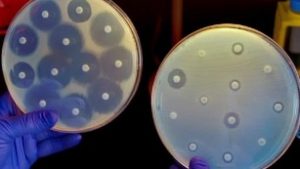Microbes in the hospital Extreme Dysbiosis of the Microbiome in Critical Illness — Daniel McDonald — mSphere (OA) (…) A trial with prospective monitoring of the intensive care unit (ICU) patient microbiome using culture-independent techniques to confirm and characterize this dysbiosis is thus urgently needed. Characterizing ICU patient microbiome changes may provide first steps toward the …
Microbes and the city The Metagenomics and Metadesign of the Subways and Urban Biomes (MetaSUB) International Consortium inaugural meeting report – The MetaSUB International Consortium – Microbiome (OA) Also see posts here and here. The Metagenomics and Metadesign of the Subways and Urban Biomes (MetaSUB) International Consortium is a novel, interdisciplinary initiative comprised of experts …
Recent papers about microbes and the built environment: Microbes in the house Fungal and Bacterial Communities in Indoor Dust Follow Different Environmental Determinants – Fabian Weikl – PLOS ONE (OA) (…) we wanted to identify key environmental determinants for the house dust microbiome from an existing collection of spatially (area of Munich, Germany) and temporally (301 days) distributed …
New papers on the intersection of human activities and microbes, selected from my daily MicrobiomeDigest blog. Microbes in the house Generation and Characterization of Indoor Fungal Aerosols for Inhalation Studies – Anne Mette Madsen – Applied and Environmental Microbiology (OA) (…) The aim of this study was to develop an inhalation exposure system to be able to examine …
Forensic microbiology A cloud of distinction – Julian Smith – New Scientist ($1.99) Could the trails of microbes we leave behind be used to solve crimes? Julian Smith picks up the scent. (…) Like our hapless suspect, we all leave traces of our microbes behind. We are haloed by an invisible nebula of bacteria, fungi and viruses. …
The Los Angeles Times posted an article yesterday on “Deadly superbugs from hospitals get stronger in the sewers and could end up in the Pacific Ocean”. While there is some truth to the matter, it is necessary to approach it with some skepticism. It is well known that antibiotic resistant bacteria are extremely prevalent in …
You may have heard the saying that “a butterfly flaps its wings and…” insert your absurd unintended, chaotic, massive consequence here (e.g., a hurricane). We may not have much control over butterflies, but we do make choices as industries, governments, and individuals on which products we produce, regulate, and consume. Examples of such products that …
Ah, the antibiotic resistance problem again. Yes, we know that antibiotic overuse-both in humans and in agriculture, contributes. This is not surprising. But how does our built environment contribute to the spread of antibiotic resistance genes? The built environment is a perfect place for host and environmental microbes to collide and share gene, including antibiotic …
Just a short post here about a new study published in Environmental Health Perspectives “Methicillin-Resistant Staphylococcus aureus (MRSA) Detected at Four U.S. Wastewater Treatment Plants” Unlike some of the stories we rag on about potential pathogens in the built environment (things like “we found E. coli!”), there is a real concern about finding MRSA in …
A quick post here on something that’s about as close to my pet topic of “probiotics for buildings” as I’ve ever seen. This group works on wastewater treatment, starting with the fact that a lot of bacteria makes it from the filtration process into drinking water. They studied the “drinking water microbiome” in a treatment …
